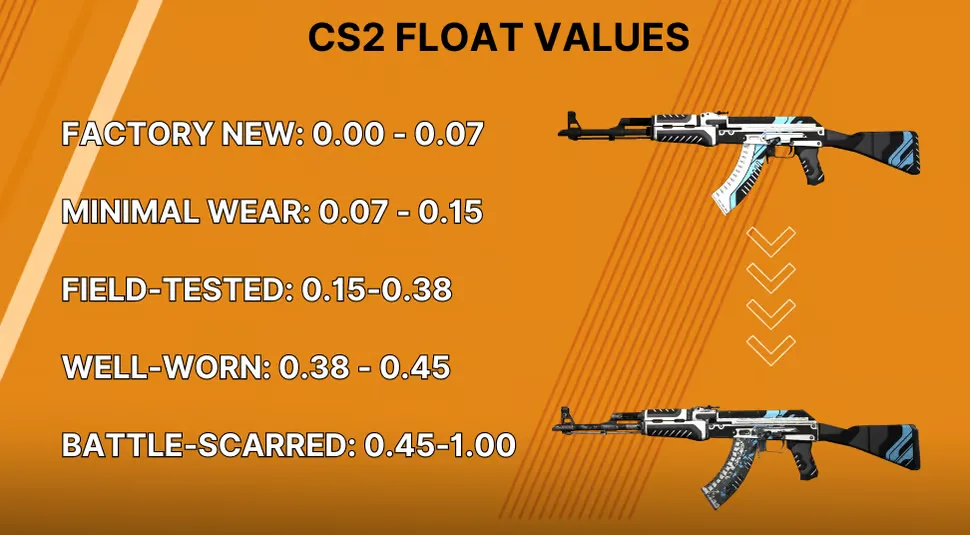Southeast Insights
Your go-to source for news and information from the vibrant heart of Shenyang.
Skin Rarity Valuation: What Makes Your Digital Assets Shine?
Unlock the secrets of skin rarity valuation! Discover what makes your digital assets shine and skyrocket their worth today!
Understanding Skin Rarity: Key Factors That Enhance Digital Asset Value
Understanding skin rarity is paramount for anyone looking to invest in digital assets, particularly in the gaming industry and NFT marketplaces. Several key factors contribute to the overall value of skins: scarcity, demand, and uniqueness. Scarcity refers to how many versions of a particular skin are available; the fewer there are, the more valuable the skin tends to be. Demand can fluctuate based on trends, recent game updates, or community interest, making certain skins more desirable at different times. Unique designs or features also enhance a skin's appeal, setting it apart from others and creating a stronger market presence.
Another crucial element in understanding skin rarity is the condition of the asset, which can range from factory new to battle-scarred. The condition significantly affects a skin's market price and desirability. Additionally, the provenance of a skin, referring to its history or ownership records, can also enhance its value—skins that belong to notable players or have been part of high-profile trades often command higher prices. By comprehending these factors, investors and gamers alike can make more informed decisions, tailoring their collections to not just play but also potentially profit from their digital assets.

Counter-Strike is a highly popular first-person shooter game that has captivated millions of players around the world. With its intense gameplay and competitive nature, it has become a staple in the esports community. If you're looking to enhance your gaming experience, consider using a daddyskins promo code for in-game skins and items.
Why Rarity Matters: The Impact of Scarcity on Skin Valuation
Why Rarity Matters: In the realm of skin valuation, scarcity plays a pivotal role. When a skin is labeled as 'rare,' it often leads to increased demand among collectors and players alike. This notion of rarity fundamentally alters the perception of value; a skin that is scarce can fetch significantly higher prices in secondary markets compared to more common alternatives. The psychological aspect of scarcity capitalizes on the innate human desire to own unique items, making these rare skins not just cosmetic upgrades, but also valuable assets.
Moreover, the impact of scarcity extends beyond mere monetary value. Rarity can enhance social status within gaming communities, as owning a unique skin often elevates a player’s reputation. As players display their rare skins, they send a message about their dedication and achievements, which can foster a sense of belonging and respect among peers. In summary, the valuation of skins is deeply influenced by their rarity, intertwining economic factors with social dynamics to create a complex landscape for collectors and gamers alike.
What Makes a Virtual Skin Truly Unique? Exploring the Elements of Rarity
The world of virtual skins has taken the gaming community by storm, offering players a form of self-expression that is both visually stunning and highly coveted. But what makes a virtual skin truly unique? One element of rarity is limited editions. These skins are released in small quantities, often tied to specific events or promotions. Players who possess them not only enjoy the aesthetic appeal but also the prestige that comes with rare ownership. Furthermore, skins can vary in their design complexity. Styles that incorporate intricate details, animations, or color variations attract more attention and demand, resulting in a higher perceived value.
Another significant factor influencing the uniqueness of virtual skins is the community engagement tied to their creation. Many games allow players to design and submit their own skins, giving rise to grassroots creativity and leading to extraordinary pieces that stand apart from mass-produced designs. The story behind a skin can also add to its allure; skins inspired by lore, characters, or memorable in-game events resonate with players on a deeper level. Ultimately, the fusion of limited availability, design intricacy, and community involvement contributes to the rarity of virtual skins, making them not just cosmetic changes but symbols of personal identity within the gaming landscape.